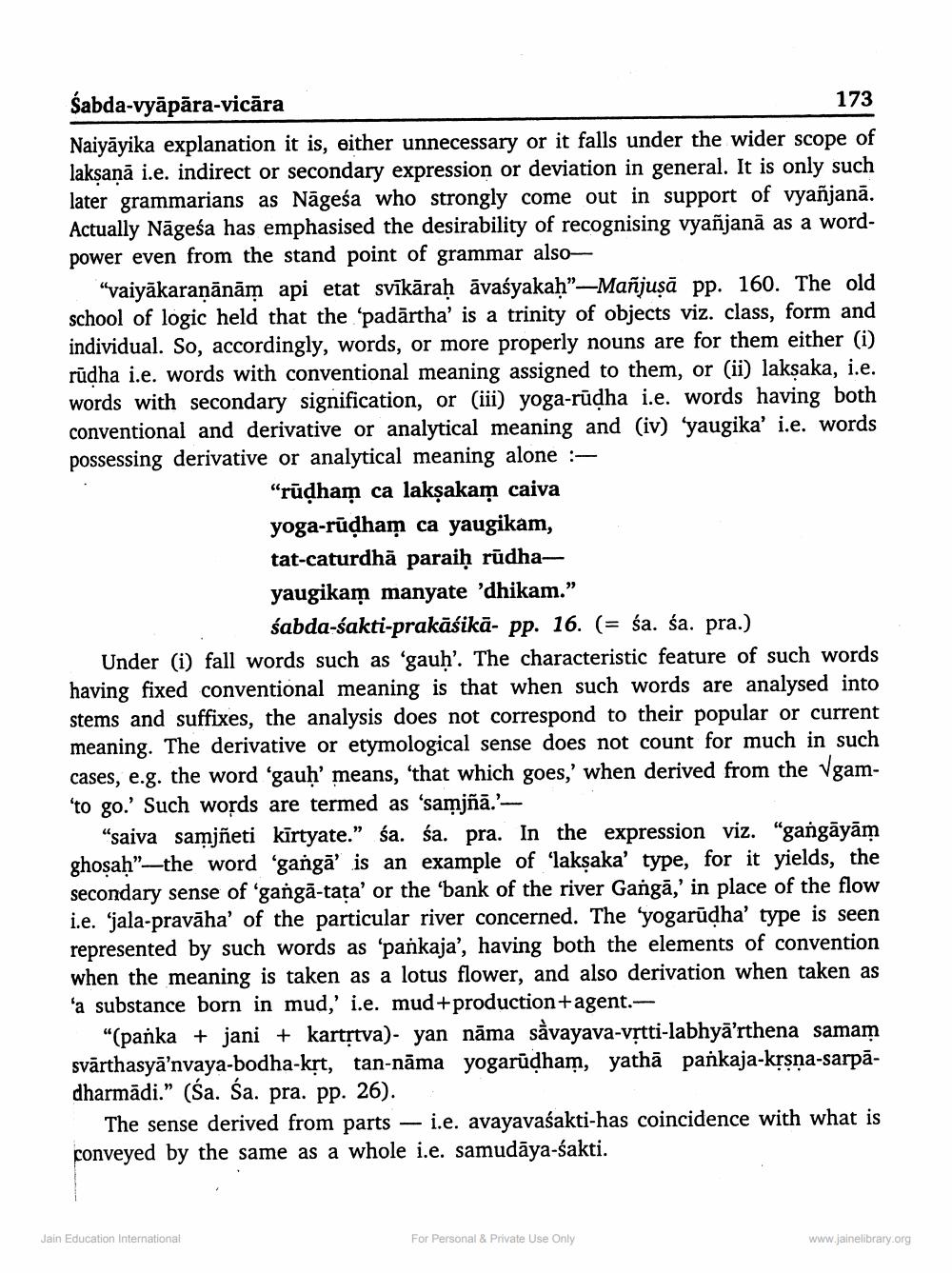________________
Sabda-vyāpāra-vicāra
173
Naiyāyika explanation it is, either unnecessary or it falls under the wider scope of lakṣaṇā i.e. indirect or secondary expression or deviation in general. It is only such later grammarians as Nāgeśa who strongly come out in support of vyañjanā. Actually Nāgeśa has emphasised the desirability of recognising vyañjanā as a wordpower even from the stand point of grammar also
"vaiyākaraṇānām api etat svīkāraḥ āvaśyakah”—Mañjusā pp. 160. The old school of logic held that the 'padārtha' is a trinity of objects viz. class, form and individual. So, accordingly, words, or more properly nouns are for them either (i) rūdha i.e. words with conventional meaning assigned to them, or (ii) laksaka, i.e. words with secondary signification, or (iii) yoga-rūdha i.e. words having both conventional and derivative or analytical meaning and (iv) yaugika' i.e. words possessing derivative or analytical meaning alone :
“rūdham ca lakṣakam caiva yoga-rūdham ca yaugikam, tat-caturdhā paraiḥ rūdhayaugikam manyate 'dhikam."
śabda-sakti-prakāśikā- pp. 16. (= śa. śa. pra.) Under (i) fall words such as 'gauh'. The characteristic feature of such words having fixed conventional meaning is that when such words are analysed into stems and suffixes, the analysis does not correspond to their popular or current meaning. The derivative or etymological sense does not count for much in such cases, e.g. the word 'gauh' means, 'that which goes,' when derived from the Vgam'to go.' Such words are termed as 'samjñā.'
"saiva samjñeti kīrtyate.” śa. śa. pra. In the expression viz. “gangāyām ghosah”-the word 'gangā' is an example of 'laksaka' type, for it yields, the
sense of 'gangã-tata' or the bank of the river Gangā,' in place of the flow i.e. 'jala-pravāha' of the particular river concerned. The yogarūdha' type is seen represented by such words as 'pankaja', having both the elements of convention when the meaning is taken as a lotus flower, and also derivation when taken as 'a substance born in mud,' i.e. mud+production+agent.
"(panka + jani + kartrtva)- yan nāma sàvayava-vrtti-labhyā'rthena samam svārthasyā’nvaya-bodha-krt, tan-nāma yogarūdham, yathā pankaja-krsna-sarpādharmādi.” (Śa. Śa. pra. pp. 26).
The sense derived from parts - i.e. avayavaśakti-has coincidence with what is conveyed by the same as a whole i.e. samudāya-sakti.
Jain Education International
For Personal & Private Use Only
www.jainelibrary.org




